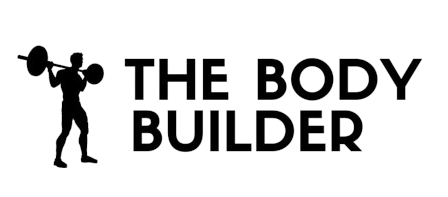Single-arm dumbbell upright row
Benefits Of This Exercise
- The single-arm dumbbell upright row is a great exercise to help target your traps and shoulders, while also helping to improve your posture and form.
- This movement requires you to use one arm at a time, which can help to even out any strength discrepancies between your arms.
- It is generally performed for moderate to high reps, such as 8-12 reps per set or more, making it a great exercise to add into your routine for muscle growth and strength gains.
- The exercise is easy to perform and can be done with either a dumbbell or a barbell.
- Builds stronger, bigger traps and lateral deltoids.
- More shoulder-friendly than barbell upright rows.
- Allows for focus on one side of the muscle at a time.
Step by Step Instructions For Single-arm dumbbell upright row
- Grab a dumbbell and stand up straight with your arm extended in front of you with a slight bend at the elbows and your back straight. This will be your starting position. Tip: The dumbbell should be resting on top of your thigh with the palm of your hands facing your thighs.
- Keep the other hand can be kept fully extended to the side, by the waist or grabbing a fixed surface. This will be your starting position.
- Use your side shoulders to lift the dumbbell as you exhale. The dumbbell should be close to the body as you move it up. Continue to lift it until the dumbbell is nearly in line with your chin. Tip: Your elbows should drive the motion. As you lift the dumbbell, your elbow should always be higher than your forearm. Also, keep your torso stationary and pause for a second at the top of the movement.
- Lower the dumbbell back down slowly to the starting position. Inhale as you perform this portion of the movement.
- Repeat for the recommended amount of repetitions and switch arms.
Caution: Be very careful with how much weight you use in this exercise. Too much weight leads to bad form, which in turn can cause shoulder injury. I’ve seen this too many times so please no jerking, swinging and cheating. Also, if you suffer from shoulder problems, you may want to stay away from upright rows and substitute by some form of lateral raises.
Variations: This exercise can also be performed using a straight bar attached to a low pulley and it can also be performed using an e-z bar, cables and exercise band.
Warm Up Tips
- Start with a light weight: Begin by choosing a dumbbell or barbell that is light enough for you to maintain proper form and technique.
- Stand with proper posture: Stand up straight with your feet shoulder-width apart and your back straight. This will ensure that you have a stable base for the exercise.
- Hold the weight correctly: Grab the dumbbell or barbell with one hand and hold it in front of your thighs. Your palm should be facing your thighs.
- Engage your core: Before starting the exercise, engage your core by tightening your abdominal muscles. This will help to stabilize your body throughout the movement.
- Lift the weight with your side shoulders: Exhale as you use your side shoulders to lift the dumbbell or barbell. Keep the weight close to your body as you lift it up.
- Keep your elbows higher than your forearms: As you lift the weight, make sure that your elbows are always higher than your forearms. This will ensure that you are using the correct muscles and prevent injury.
- Pause at the top of the movement: Once the weight is nearly in line with your chin, pause for a second at the top of the movement. This will help to maximize the muscle engagement.
- Lower the weight slowly: Inhale as you lower the dumbbell or barbell back down to the starting position. Take
Single-arm dumbbell upright row Safety Tips
- Start with a light weight: It’s important to start with a weight that you can comfortably lift and maintain proper form. This will help prevent injuries and allow you to focus on the correct technique.
- Maintain proper form: Stand up straight with your arm extended in front of you and your back straight. Keep your elbows close to your body and your torso stationary throughout the movement. This will ensure that you are targeting the correct muscles and minimize the risk of injury.
- Control the movement: Lift the dumbbell using your side shoulders, exhaling as you lift. Avoid jerking or swinging the weight, as this can put unnecessary strain on your muscles and joints. Lower the weight back down slowly, inhaling as you do so. This controlled movement will help build strength and prevent injuries.
- Be cautious with weight selection: It’s important to use an appropriate weight for your fitness level. Using too much weight can lead to bad form and increase the risk of shoulder injury. Start with a lighter weight and gradually increase as you become stronger and more comfortable with the exercise.
- Avoid if you have shoulder problems: If you have pre-existing shoulder problems, it may be best to avoid the single-arm dumbbell upright row. Instead, consider substituting it with lateral raises or other exercises that put less strain on the shoulders.
- Switch arms: To ensure balanced strength and muscle development, remember to switch arms

